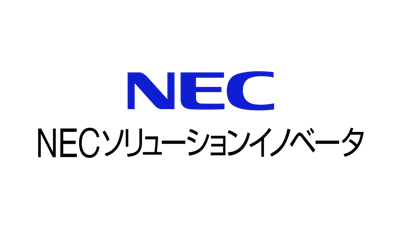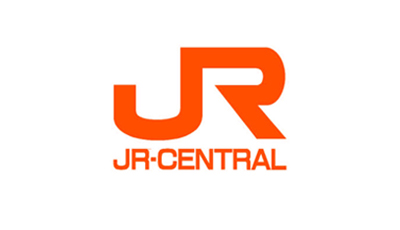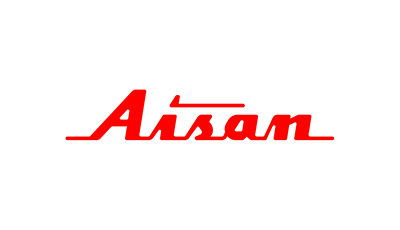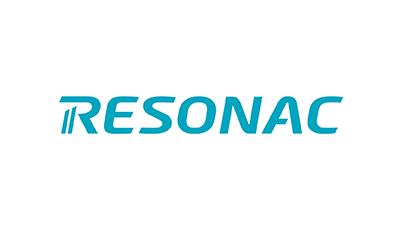Recently, as the environment surrounding businesses has undergone rapid change, there has been a sharp increase in interest in organizational cultural reform (cultural transformation), as companies seek sustainable growth and better utilization of personnel. Key to achieving a variety of transformations are the organizational cultural reform supporting transformation at companies and the fostering of engagement among its people.
This Insight covers the background to the increased focus on organizational cultural reform, the aims of such efforts, and specific approaches for achieving this, through a series of specific case studies.
What is Organizational Cultural Reform (Cultural Transformation)? Understanding From the Four Steps of Reform Through Successful Case Studies
- Management Strategy/Reformation
- Human Capital Management

Contents
- What Is Organizational Cultural Reform (Cultural Transformation)?
- The Elements of Organizational Culture
- The Background to the Increased Focus on Organizational Cultural Reform (Cultural Transformation)
- The Benefits and Aims of Attempting Organizational Cultural Reform (Cultural Transformation)
- Common Concerns Surrounding Organizational Cultural Reform (Cultural Transformation)
- Key Factors in Successful Organizational Cultural Reforms (Cultural Transformations)
- The Four Steps to Achieving Organizational Cultural Reform (Cultural Transformation)
- Points to Beware of in Organizational Cultural Reform (Cultural Transformation)
- A Case Study in Successful Organizational Cultural Reform (Cultural Transformation): Aisan Industry Co., Ltd.
- Summary: More Impactful Organizational Cultural Reform (Cultural Transformation) Through the Adoption of the Right Approaches
What Is Organizational Cultural Reform (Cultural Transformation)?
Organizational culture refers to the “difficult to see cultural elements” that impact day-to-day business and interpersonal relations at a company or organization, such as the values, patterns of behavior or communication styles rooted in said company or organization. Formed out of an accumulation of the repeated behaviors of each and every person at the company, organizational culture deeply impacts the company’s decision making, customer service and even the nature of its innovation.
Organizational cultural reform (cultural transformation) refers to efforts to revise existing cultures and evolve them in the direction of becoming more flexible, sound and able to adapt to business strategies and changes in the social environment. Many companies are now focused on organizational cultural reform as a means not merely of improving the atmosphere at a business, but of creating a platform for supporting sustained growth at the company.
The Elements of Organizational Culture
Organizational culture is an aggregate of difficult-to-perceive elements such a company’s customs or values, and the atmosphere at a workplace, and has a significant impact on its sustained growth. Such a culture is not merely an abstract concept, but, rather, is formed as a collection of “practices.” Such practices arise from an accumulation of “behaviors” engaged in each and every day by each and every person at the company (see Figure 1).
Behaviors
The most basic element of an organizational culture is day-to-day “behaviors.” This refers to how each person at a company approaches their work, and how they engage with colleagues and customers. Each one of these behaviors represents a first step in forming an organization’s culture. For example, we could ask how people respond to problems when they arise: Do they share the issue immediately, or do they quietly hope that it will pass? Do people respond positively to new ideas, or do they receive them negatively? Choosing between such behaviors will undoubtedly sway the direction of an organization.
Practices
When behaviors are repeated, they become “practices.” Practices are patterns of behavior that are repeated unconsciously. They come to be shared within organizations, taking root as cultures. As an example, small, daily practices such as exchanging greetings and sharing information every morning, regularly giving feedback, and a customary expressing of gratitude can foster a sense of unity and relationships of trust within organizations. While practices do not change overnight, they can be gradually shifted into a desired direction through repeated enactment of desired behaviors.
Culture
The aggregate of practices formed in this way makes up an organization’s culture. Culture impacts organizations in all manner of dimensions, including a company’s decision making and human relations, and its attitude towards risk. This sort of culture affects not only people within the company, but extends to stakeholders including customers, partners, shareholders and regional society, thus impacting a company’s trustworthiness and brand image. A sound culture serves as a foundation that increases corporate value and supports sustained growth.
The Background to the Increased Focus on Organizational Cultural Reform (Cultural Transformation)
Behind the growing focus on organizational cultural reform lies intense change in market and the simultaneous HR challenges confronting companies in the form of labor shortages and diversifying work styles. Amidst such circumstances, companies are faced with the need to maximize their human capital, grow sustainably and achieve transformation of their business portfolios in line with their circumstances. Organizational cultural reform is thus positioned as a challenge on the way to realizing those goals.
Digital technology-enabled DX in particular is often treated as a major theme in business transformation. According to a survey by the Ministry of Economy, Trade and Industry (METI) , corporate leaders have nominated organizational cultural reform as chief among their view of the challenges facing them in advancing DX.
The “Digital Transformation Survey 2025” conducted by the METI showed that the more a company was genuinely advancing DX, the more likely it was to be proactively attempted to transform its organizational culture. The METI also reported that there was a significant gap between companies recognized as DX stocks and those not recognized as such in terms of their attitudes towards organizational culture initiatives (see Figure 2).
The Benefits and Aims of Attempting Organizational Cultural Reform (Cultural Transformation)
Organizational cultural reform is being conducted across all phases of business at companies operating with more than thousands of employees. Here we will summarize the benefits and aims of attempting organizational cultural reform.
1. Business Risk Countermeasures and Rebuilding Trust (From Negative to Zero)
One aim of organizational cultural reforms is to serve as a countermeasure for management risks such as compliance violations or incidents of misconduct. Organizational culture has a significant impact on standards of behavior and decision making in companies and organizations. For example, as in past cases involving a certain food product manufacturer, a restaurant chain and a second-hand automotive dealer, revisions to organizational culture became essential as part of efforts to regain the trust of society in the wake of serious issues stemming from compliance violations being revealed. It would be safe to classify such efforts as more than mere efforts to restore these companies’ images. Instead, they were genuine efforts to prevent recurrences and to ensure the viability of the companies.
2. Improving the Viability and Quality of the Business (From Zero to Positive)
Establishing an organizational culture is important for stably sustaining a business and improving the quality of its products and services. In particular, as the needs of society and customers remain in constant flux, companies need to rely on the abilities of people and teams that can meet such challenges flexibly. Core business activities such as the provision of value to customers, the building of relationships of trust with partners, and the establishment and activation of employees, are all deeply connecting to the stances and behaviors of the business as an organization. That is to say, to its culture. For this reason, many companies feel this point is an important challenge, and are attempting to transform their cultures.
3. Business Reform (From Positive to Even Greater Positive)
To achieve sustained growth, it is essential for companies to reform their businesses in ways that go beyond the bounds of what has come before. Launching new businesses and reforming business processes requires an organizational culture that welcomes new challenges and fosters the free exchange of ideas. Traditional Japanese companies in particular tend to have established cultures of “leaders lead and followers do.” Initiatives to transform such cultures into ones that generate innovation by being led by people on the ground and putting the focus on dialogue are an example of this sort of reform. In this case, organizational cultural reform can be viewed as a kind of strategic investment aimed at further increasing corporate value.
Common Concerns Surrounding Organizational Cultural Reform (Cultural Transformation)
Companies attempting organizational cultural reform often come up against a variety of barriers. Where the HR or DX and IT departments are the drivers behind such efforts, companies can find that their leaders are not cognizant of their own need to change, making it difficult to get commitment (whether public commitment or accountability) from them. Organizational culture is also something that is difficult to quantify, so the fact that it is difficult to visualize the outcomes of such efforts can be a barrier to involving many stakeholders. At companies that have long histories and many employees in particular, it can take time to convince key people to introduce a completely new culture and to consolidate new practices, making it difficult for the company to recreate itself as something different.
Example of Concerns
- It is difficult to get commitment from leadership
- It is difficult to evaluate expected outcomes and performance in quantitative terms
- It is difficult to take the scalper to a culture developed over many long years. Companies are not sure how to proceed
Companies will also fail to achieve organizational cultural reform if they treat it as something separate from business strategy.
However, in practice, a lack of transparency over the business strategy underlying such efforts and the qualitative factors of organizational culture can often lead to a lack of clarity in how culture ties in with the business. With this in mind, while communications that inform and establish the aims of transforming the company and the need for organizational cultural reform are essential, if such efforts are advanced in a purely abstract way without paying attention to how to resolve those ambiguities, companies will wind up with ambiguous and generic policies that do not reflect the character of their company, and which will thus fail to get buy in from the leadership and the company more broadly. This will lead to a situation in which not only can achievements not be evaluated in quantitative terms, but key behavioral changes will not be achieved.
Key Factors in Successful Organizational Cultural Reforms (Cultural Transformations)
For organizational cultural reform to succeed, a “shared understanding” throughout the company is important above all else, including even the design of systems and policies. In particular, the promoters and organizers of transformation efforts making clear how they see the company’s current challenges and carefully sharing that understanding with internal stakeholders forms the foundation of such initiatives. Here we will go over three essential points to bear in mind when creating a share understanding that are essential for realizing transformation.
1. Sharing A Sense of Urgency That “Things Cannot Go On as They Have Done Before”
The first thing that is needed is to share a sense of urgency across the organization as a whole in relation to the status quo. Organizational cultural reforms make no progress where people are satisfied with how things are. The promoters of reform need to broadly convey a sense of crisis about the future of the organization to everyone from the leadership to people on the ground, suggesting that the company could lose its competitive edge, that the trust that customers and the public have in it could be shaken, and that employee engagement could decline and they could lose exceptional personnel. A sense of crisis is a driver for change. Without this, people will treat reform as someone else’s problem, and behavioral change will not occur.
2. Clarifying the Vision and Forming Buy In
The next important task for organizations is to clarify what sort of organization they aspire to be, and to make that vision into something that they can get buy in from their employees for. An ideal culture needs to be more than just abstract slogans. It needs to be something that people can concretely visualize in terms of how it affects day-to-day business and interpersonal relations. For example, even in the case where an organization aspires to a “culture that welcomes challenges,” it is important for companies to convey a specific message that lets members of the company take ownership of how they become a collective that make choices when confronted with difficult decisions where there is no one right answer. By getting buy in, companies may be able to turn transformation from “something that is done to” the people within a company to “something they do to build the future.”
3. Getting Acceptance for an Approach to Reform
Finally, it is essential for companies to get acceptance from stakeholders for the approach they take to advancing reform. To get as many stakeholders onboard with advancing the reform process as possible, it is important to involve them at the earliest possible stage, for example, in the deliberation process at the consideration stage or by sharing progress as something that is currently ongoing, rather than trying to advance such efforts by notifying them of and ordering them to take part in top-down, unilateral policies. Without the buy in of on-the-ground stakeholders like employees and middle leaders, such efforts are likely to become empty formalities and reform is unlikely to make much progress.
The Four Steps to Achieving Organizational Cultural Reform (Cultural Transformation)
Organizational cultural reform is an essential initiative for realizing sustained growth and transformation at a company. Just introducing mere slogans and systems, however, will not change the behaviors and values of people within a company. Here we will go over the four steps we believe lead to effective cultural transformation (see Figure 3).
1. Upping the Resolution on the Culture the Organization Aspires to
2. Putting in Place Systems to Ascertain the Gap from the Vision to the Status Quo and to Monitor Root Cause Improvements
Once a company has decided on its ideal culture, it then needs to ascertain the gap between that and the status quo. This means visualizing the current situation on the ground through employee surveys, interviews and workshops, and identifying where the issues lie, and why things are the way they are. It is even more important for this not to be something that ends with a one-off survey. Instead, companies should put in place systems for monitoring their cultures as they seek continuous improvement. This calls for systems that can capture the signs of change and respond flexibly while operating a PDCA cycle.
3. Ownership and Unity from the Leadership
Realizing transformation requires cultivation of soft factors in the form of reforming attitudes among leadership, in parallel with the establishment of hard factors in the form of systems and frameworks. No matter how outstanding the vision or the measures to achieve it are, if leadership is not serious about pursuing reform, then they will not be able to gain the trust of employees. An organization’s leadership presenting a united front and realizing their desired culture through their own words and actions serves as the driving force promoting change in the organization as a whole. The attitudes of top leadership are key to spurring behavioral change among employees.
4. Improving Acceptance Down the Hierarchy
The final important element is fostering acceptance of reform across the organization as a whole. Here, acceptance refers to sharing and taking on board philosophies and opinions related to a transformation. Middle management, in particular, acts as a bridge between leadership and the people on the ground, and thus can decide the success or failure of a transformation project. It is necessary for them to understand the intentions of leadership, buy into that vision for themselves, and thus carefully convey and spread acceptance of those ideas on the ground more broadly. This calls for a considered approach that “comprehensively permeates” each layer of an organization, rather than top-down, unilateral diktats.
Points to Beware of in Organizational Cultural Reform (Cultural Transformation)
So far we have covered ways companies attempt to reform their organizational cultures. Now we will turn our attention to some specific points to beware of in carrying out organizational cultural reform.
1. Understanding That This Is a Long-Term Strategy
Organizational cultures do not change overnight. Organizational cultures are formed from the accumulation of everyday behaviors and values. This is why companies need to attempt reform projects on the assumption that they operate on a scale of years. It is important for companies to be oriented towards attempting reform in an ongoing manner from a long-term perspective, rather than demanding short-term results.
2. Avoiding Making Organizational Cultural Reform the Goal in Itself
Organizational cultural reform is a theme that is difficult to measure the process and progress of through clear figures like sales and productivity. The mainstream approach is to treat survey indicators like engagement and wellbeing as process KPIs to measure the outcomes of progress. However, while such methods are useful for advancing data-driven efforts that eliminate bias, overly focusing on variance in engagement scores and reacting excessively to fluctuations risks losing sight of the essence of the issue. It is instead important for companies to constantly share the purpose and aims of what they are doing, asking, “why is this reform needed,” and “what sort of culture do we aspire to,” thus focusing on qualitative changes and long-term business outcomes.
Related Insights:What is the ABeam Approach to Enhancing Employee Engagement? Going Over Our Process and Its Advantages (Japanese only)
3. The Right Way to Deal With Any Pushback That Arises
No matter how meaningful a reform is, there will always be people who want to maintain the status quo or who feel anxiety in the face of change. Pushback is a natural reaction. This means that companies should react not by eliminating it, but rather by involving such people through careful dialogue and promoting understanding. While it is impossible to completely get rid of any resistance, issues arise when its impacts are to the extent that they interfere with the overall plan. For this reason, companies should not neglect the tasks of explaining and exchanging views about reform in order to promote cooperation among stakeholders and middle leaders, advancing their efforts in a balanced manner, while taking on board valuable feedback and the opinions those parties.
4. Continuing to Clearly Share the Aims and Vision Behind Reform From First to Last
As we have presented throughout this Insight, the process of reform runs the risk of running into confusion or disorder. What is important at such times is to avoid losing sight of why you are pursuing reform and what your vision for the organization is, and to continue to repeatedly share these ideas. Clarifying your aims and vision is essential. It serves as a “compass” that gets everyone moving in the same direction.
A Case Study in Successful Organizational Cultural Reform (Cultural Transformation): Aisan Industry Co., Ltd.
Finally, we would like to present the case of Aisan Industry Co., Ltd. (hereinafter Aisan Industry) as a case study of how ABeam Consulting helped a client improve employee engagement and reform its organizational culture.
Practicing Organizational Cultural Reform to Advance Business Portfolio Transformation Through the Promotion of Dialogue and Autonomous Career Formation
Aisan Industry has long been active as an automotive parts manufacturer, providing power train products mainly to the Toyota Motor Corporation for many years. With the global shift to EVs and the transition to clean energy, Aisan Industry began to work to transform its business portfolio. What became clear through this process was that low employee engagement and passive attitudes were rife in the company.
While the company’s first ever engagement survey, conducted in 2022, showed a high intention to continue serving at the company among employees, it also revealed low expectations of the company and poor desire to take on challenges among employees. In response to this, Aisan Industry began to work in earnest on a project of organizational cultural reform, under the name of “engagement reform.”
The first step in this reform project was to formulate a concept, together with employees, for what an “engaging workplace” would be. The company promoted the three messages it decided on - “change in the company starts with you,” “it’s your career, make it about you,” and “end each day with satisfaction” - using visual and videos that would get buy in from employees.
Next, the company organized Aisan Katariba, a forum for dialogue between employees and leadership that incorporates branding methods. This was a company-wide program of dialogue intended to get the leadership to listen to the true feelings of employees. Over 160 sessions were held over half a year, with over 1,600 participants. The company worked to improve the quality of dialogue, with leaders receiving training in listening to employees, rather than unilaterally putting forward their own message. As a result, there was a dramatic change in the atmosphere within the company, with, for example, some 70% of employees responding positively to the survey question, “is the company trying to change?”
The company also developed “Aisan Career Canvas” as a program to support employee career autonomy. The aim of the program was to encourage employees to develop greater clarity over their career goals based on their own individual values, and to incorporate this into their day-to-day behavior. The company even brought in schemes to promote self-understanding in a fun way among employees in the form a Career Trump card game.
Through such efforts, the company achieved a broad improvement in employee engagement, with scores for “trust in leadership,” in particular, increasing more than 10 points over a single year. This changed the way leadership and employees relate to one another, helping a culture that welcomes challenges to begin to take root.
The case of Aisan Industry is positive case study of how a company was successful in bringing about organizational cultural reform along the three axes of shared understanding in the form of a shared sense of urgency, presentation of a vision that gets buy in, and an approach that gets acceptance. It shows that genuine reform that puts the focus not just on systems and frameworks, but also on employee emotions, can help sustain transformation at a company. For further details, see the Case Studies page.
Please also see Case Study in Supporting the Design of Employee Engagement KPIs and Construction of an Analysis Platform for Central Japan Railway Company, Case Study in Supporting the Development of Section and Department Head-Level Leaders at NEC Solution Innovators, Ltd. to Generate Business Outcomes, and Initiative to Transform the Business Portfolio at NEC Corporation (Japanese only).
Summary: More Impactful Organizational Cultural Reform (Cultural Transformation) Through the Adoption of the Right Approaches
Recent years have seen a rapid rise in interest in organizational cultural reform as companies seek sustained growth and better utilization of human resources. This Insight has systematically covered the genuine key points needed for successfully introducing such efforts.
Organizational cultural reform is behavioral change of the people who make up a company. Because people are people, companies will not be able to achieve the transformations they want without their acceptance and buy in. Naturally, this also means they will be met with opposition and criticism. However, those people are still coworkers who have come together in the same company. Broadly speaking, it is more or less the common wish of all coworkers for their company to overcome difficult phases and survive in this era. This is precisely why we feel it is important for corporate leaders to pursue transformation without forgetting to think hard to come up with a purpose and aims for transformation that the employees, who are their fellow coworkers, can get behind, and to communicate this in ways that ensure a continued shared understanding with people across all layers of the organization.
ABeam Consulting works side by side with clients to reform organizational culture in order to achieve corporate transformation, from formulating a vision to executing on it, based on our wealth of experience and insights. We also boast numerous successful case studies where we have worked tenaciously, while creating a real sense of impact from reform.
Please do not hesitate to reach out to us if you are looking for a transformation partner to achieve organizational cultural reform.
Related Insights:What is HR strategy? How is it different to strategic HR and the HR strategy formulation process?
What is Employer Branding? An Approach to Becoming the Company of Choice Internally and Externally (Japanese only)
What Is Human Capital Management? An easy-to-understand explanation of the background to and advantages of an approach that is in the spotlight, and how to put it into practice and make relevant disclosures
Click here for inquiries and consultations


















